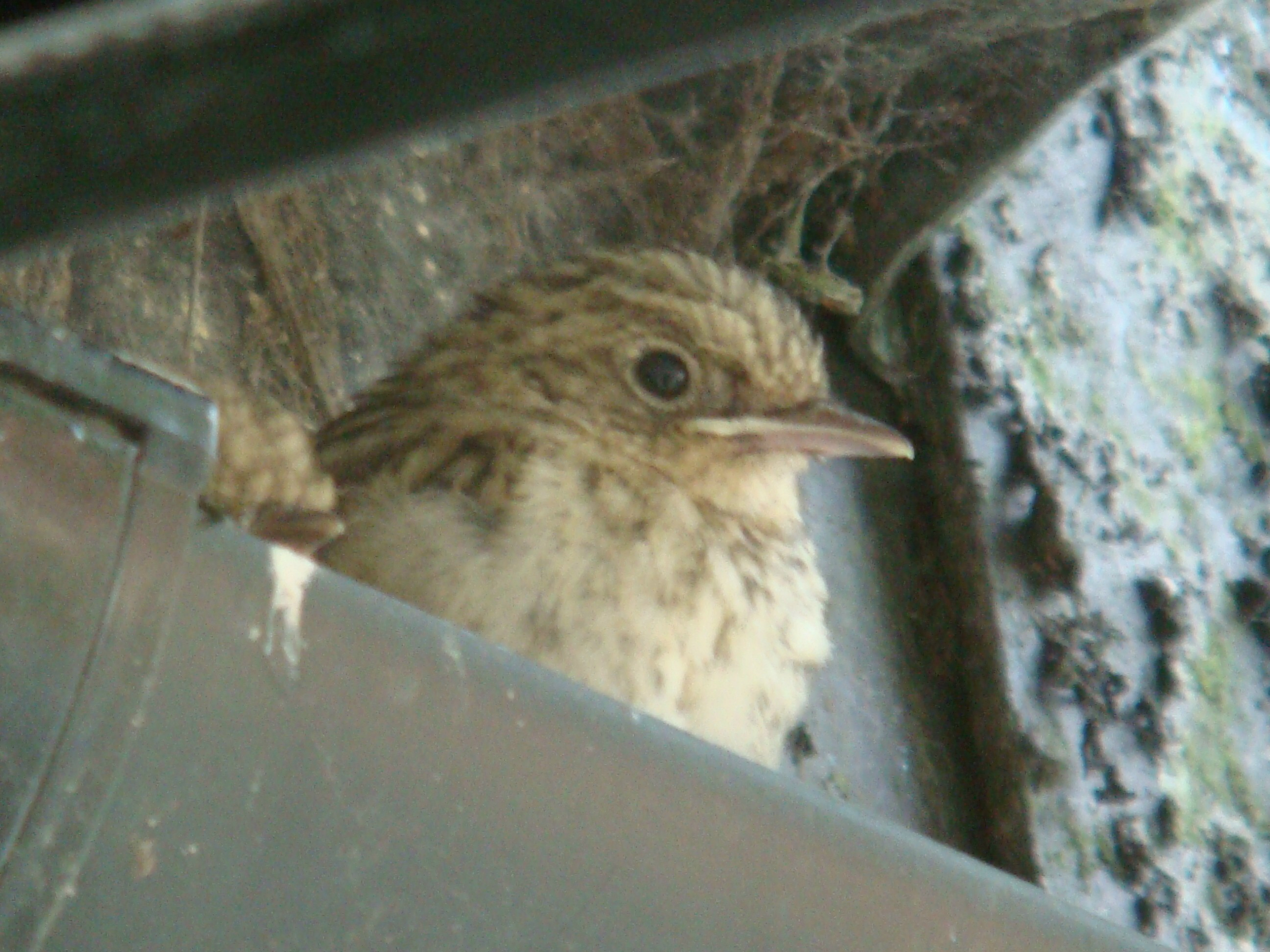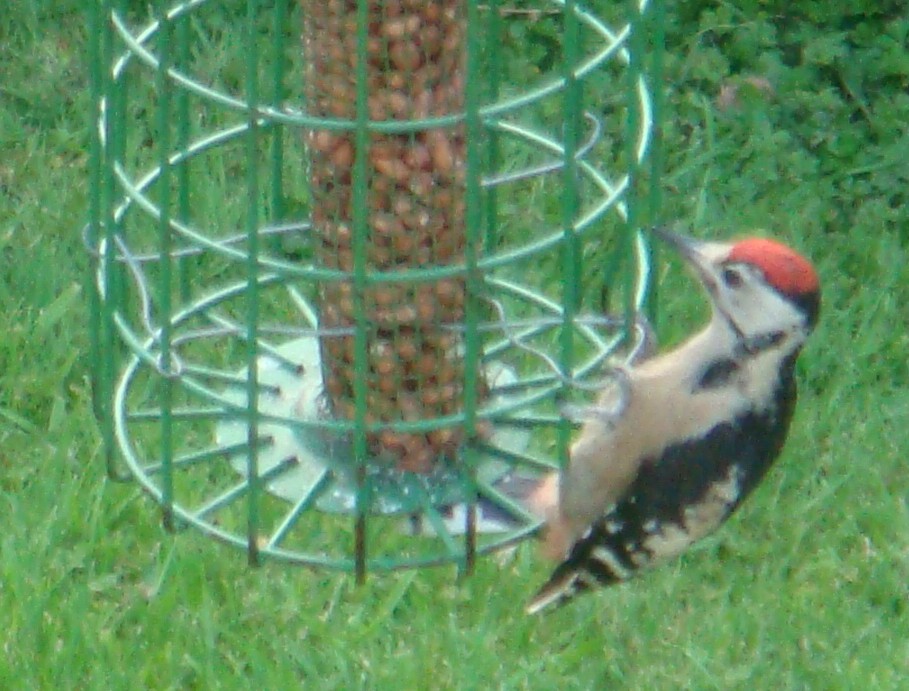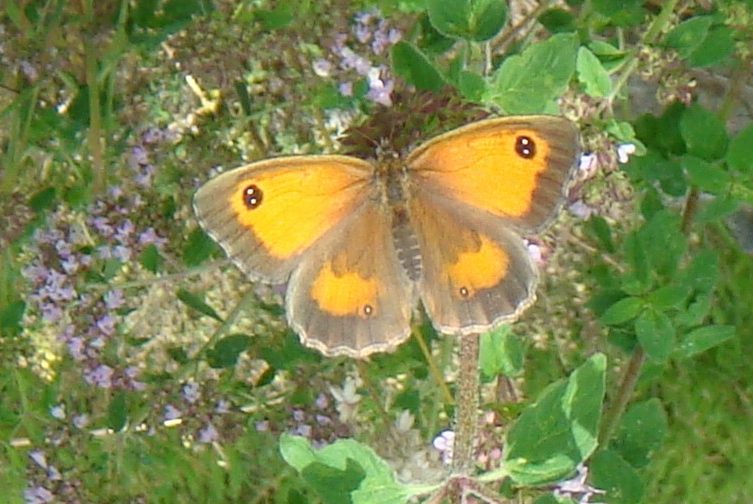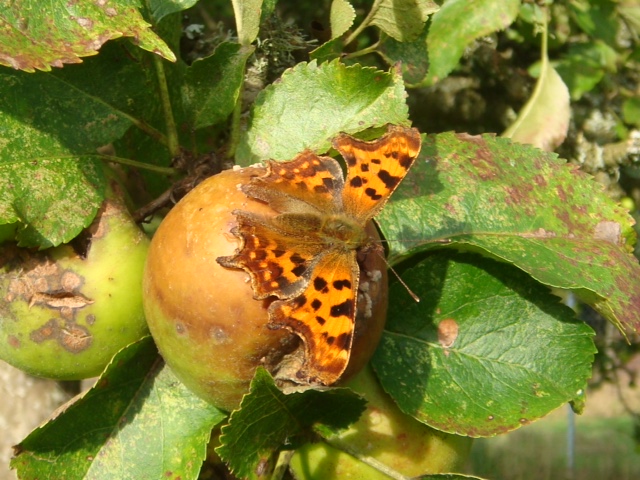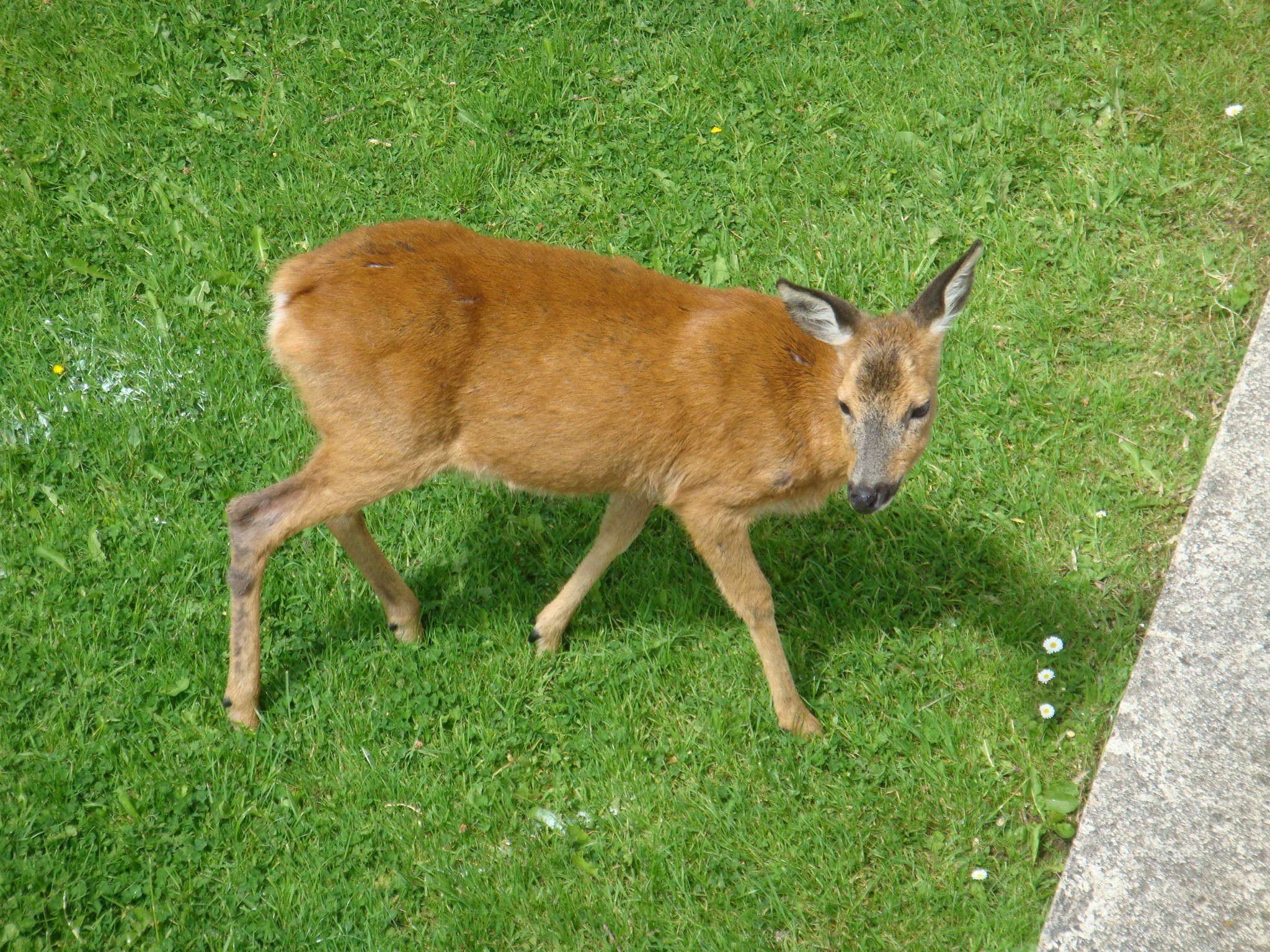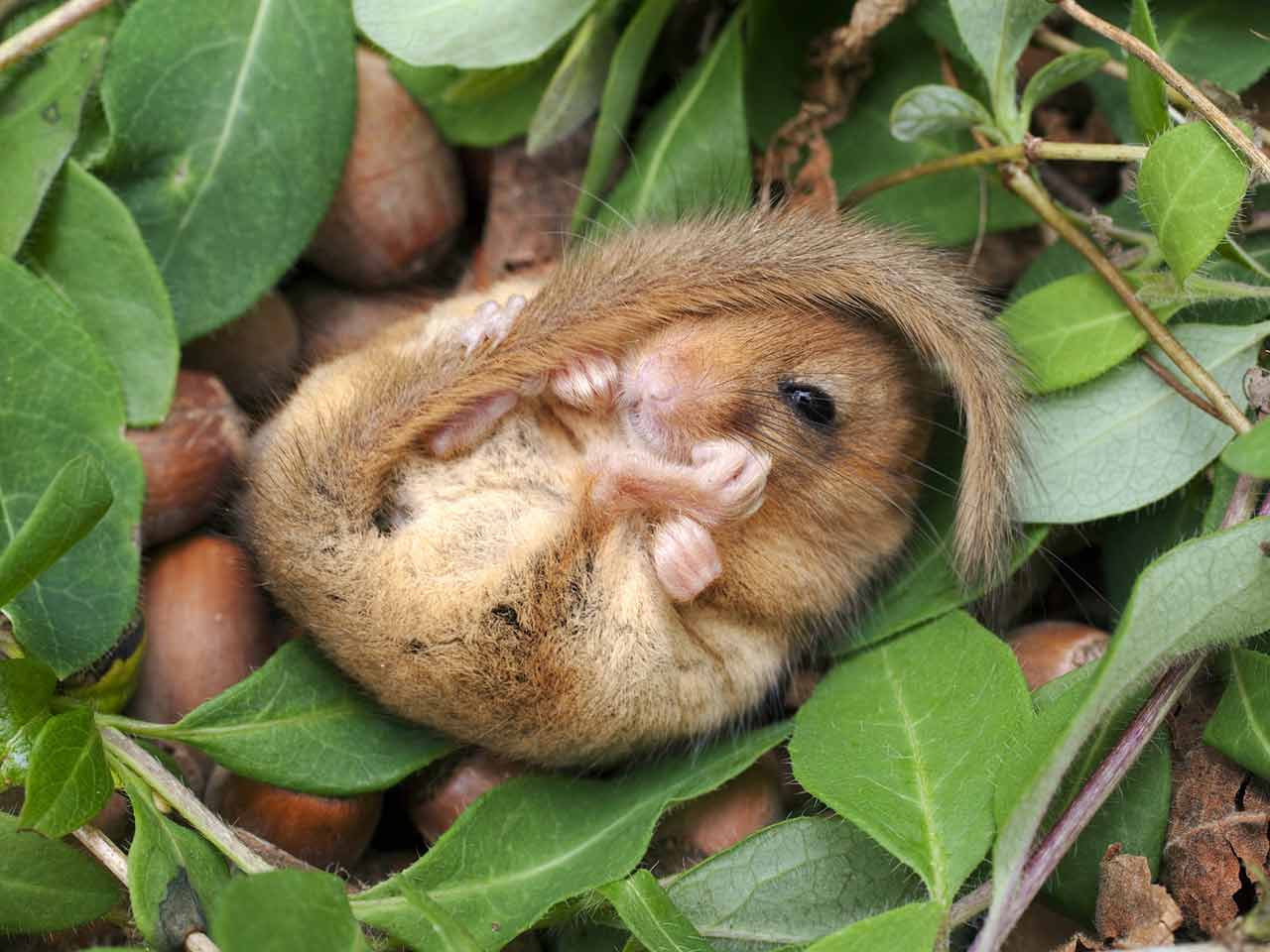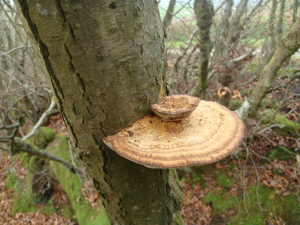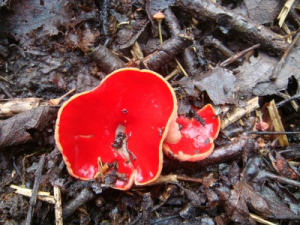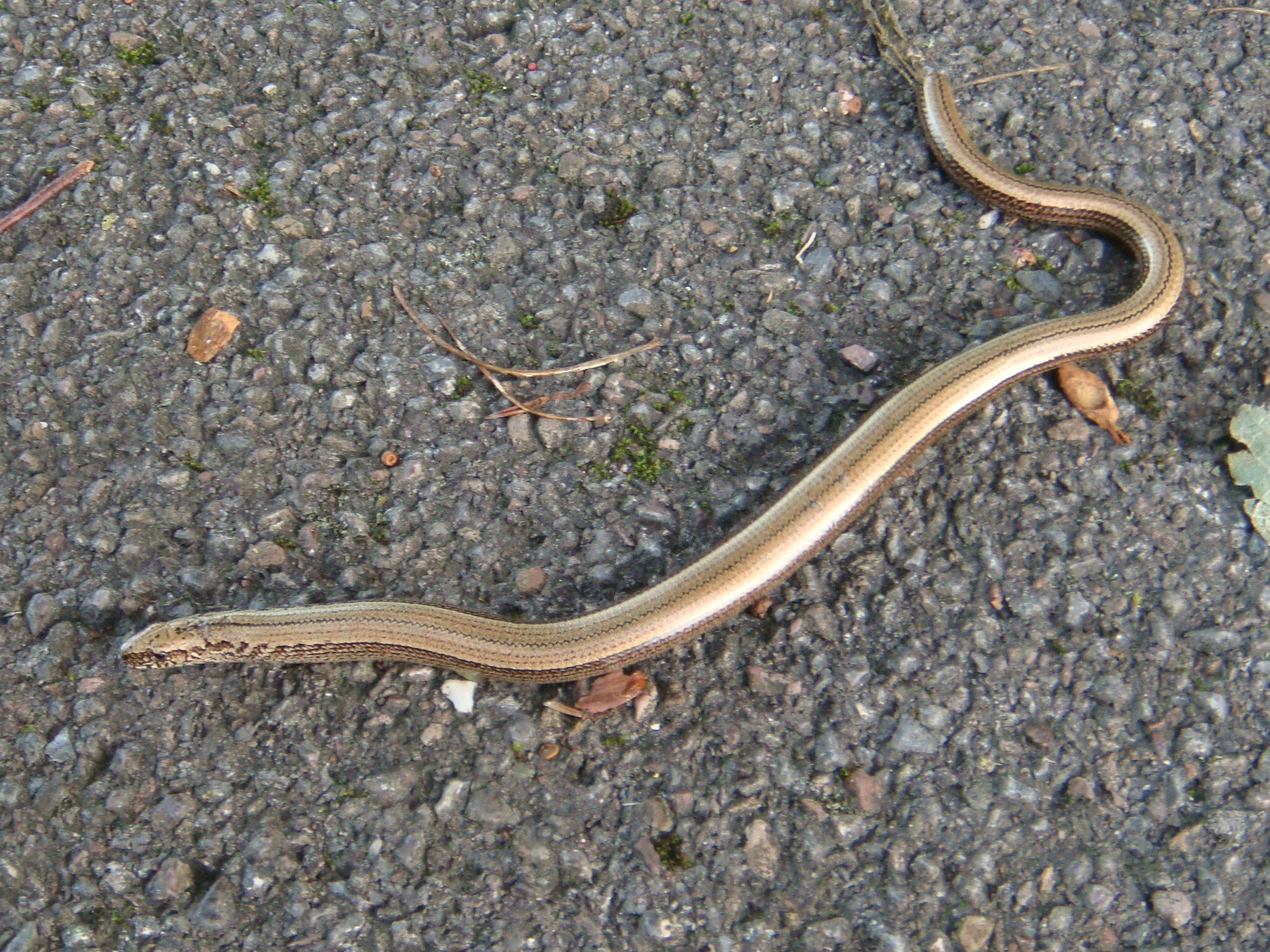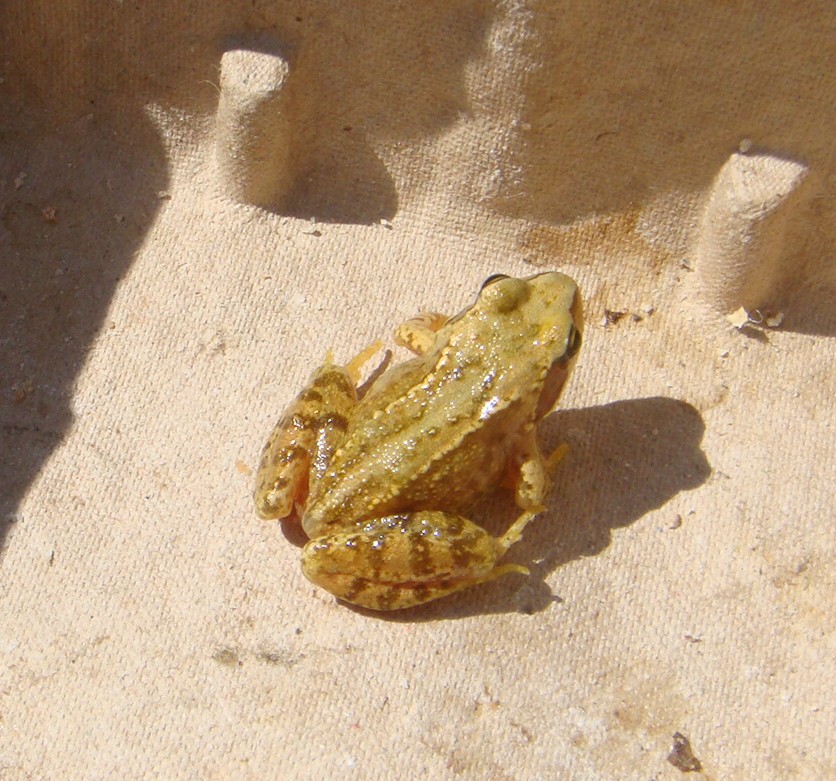Birds
Many species of birds live and breed in the area many of which are common in gardens, but we also have some less common species, these can be difficult to photograph, so please send in any photos you have of unusual birds
Spotted Flycatcher
These are migrants, but breed here in the summer. I was lucky enough to have a nest outside the kitchen window, and caught this youngster before he fledged. They are in Britain from about May to August, then fly back to the equatorial forests in Africa. They feed on insects and can often be seen perching on a favourite spot, then flying up and back to catch their prey. They also feed on berries in the autumn. They are quite rare and have declined in numbers in the last few years.
Great Spotted Woodpecker
Fairly common in the area, this one is a juvenile feeding on peanuts, the youngsters have a red cap and the red rump is not so distinctive. As with other woodpeckers, the stiff tail feathers are used as a prop when it is clinging to a tree, and its toes are specially arranged with two pointing forwards and two backwards. Their flight is very undulating as they completely fold their wings against the body between each series of several flaps.
Insects
There is a vast array of insect species in the area, butterflies, moths, bees, beetles, hornets . . .
Butterflies
There are 66 species of butterfly found in the UK, at least 18 species have been observed around the area
The Gatekeeper is fairly common butterfly and as its name suggests, does tend to be found near openings in hedgerows, although it also is seen around flowering plants and in gardens, this one is a female feeding on oregano
The Comma is a very distinctive butterfly, with its scalloped wings .In the 19th century, the British population of the comma crashed, thought to be caused by the hop production being cut back, however they have increased in number, and generalist species as this is, started to undergo a range expansion. In particular, comma butterflies have been seen to expand along the northern edge of its range towards Scotland and North Wales. This photo taken on 5th October shows the butterfly feasting on a fallen apple.
Deer
Roe deer are common in the area, this one has her summer coat on.
Mammals
Bats
There are 18 species of bats in the UK, and 12 species have been recorded near Cotleigh. Greater horseshoe bats are present in the area and more information can be found here.
The most common type of bat that you will see, is the Pipistrelle.
There are 3 species of pipistrelle that are commonly found in the UK, the common, soprano and Nathusius’. They are the smallest of the British bats, with both the common and soprano likely to be found in most areas – including the middle to towns and cities. The Nathusius’ is a rarer, migratory bat, normally found near water.
In a survey carried out near the village in July 2017 using a sound detector over 3 nights, and then the recording sent back for scientific analysis, the following bats were found to be present,
| Bat | Number of passes detected |
|---|---|
| Common pipistrelle | 890 |
| Pipistrelle species | 450 |
| Whiskered or Brandt’s | 44 |
| Serotine | 26 |
| Noctule | 20 |
| Natterer’s | 13 |
| Myotis species | 11 |
| Barbastelle | 9 |
| Daubenton’s bat | 8 |
| Lesser horseshoe | 5 |
| Brown long−eared | 2 |
| Greater horseshoe | 2 |
| Leisler’s bat | 1 |
| Leisler’s or Noctule | 1 |
| Nathusius’ pipistrelle | 1 |
| Noctule, Serotine or Leisler’s | 1 |
| Soprano pipistrelle | 1 |
As can been seen, Cotleigh is very fortunate to have two thirds of bat species found in the UK, and coupled with the Dark Sky’s in the area, you can often view bats feeding at dawn and dusk. This photo is of a common Pipestrelle
Dormice
Dormice have greatly declined in this country, but we are lucky in this area to have good numbers of dormice living in our woodland. Dormice have orangey coloured fur, which extends to a fur covered tail, which is a good way of identifying dormice from other mouse species
Plants
As part of the Blackdown Hills Area of Outstanding Natural Beauty (ANOB) the landscape of valleys and flat topped ridges, tree lined roads, has many important areas for plants, trees, hedges and other areas. There is a wide variety of plant life, which supports wildlife and the farming community.
Fungi are an important part of the ecological system, this is a bracket fungus in a small section of woodland close by the village, if anyone knows the species, please contact the site administrator!
There is an amazing variety of species, this one just photographed in March 2018, is a Scarlet Elf Cap, easily identified by its colour and shape, grows in damp places, on rotting wood, and in leaf litter
Reptiles
The Parish is home to a number of species of reptiles and amphibians
Slow Worm
This is actually not a snake, but a legless lizard, this one is a female, photographed at the end of October, on some tarmac, warming up. They give birth to live young, and can be very long lived, up to 30 years in the wild, and the record in captivity is 54 years. There are a number of features which are different from snakes, the scales do not overlap they have eyelids and can shed their tails as a defence mechanism. They eat slugs and worms and are often found under stones or sheeting.
Common Frog
Frogs are not a uniform colour and can be any colour from olive green to grey-brown, brown, olive brown, grey, yellowish and rufous. However, it can lighten and darken its skin to match its surroundings. Some individuals have more unusual colouration — both black and red individuals have been found in Scotland, and albina frogs have been found with yellow skin and red eyes. During the mating season the male common frog tends to turn greyish-blue.
